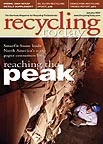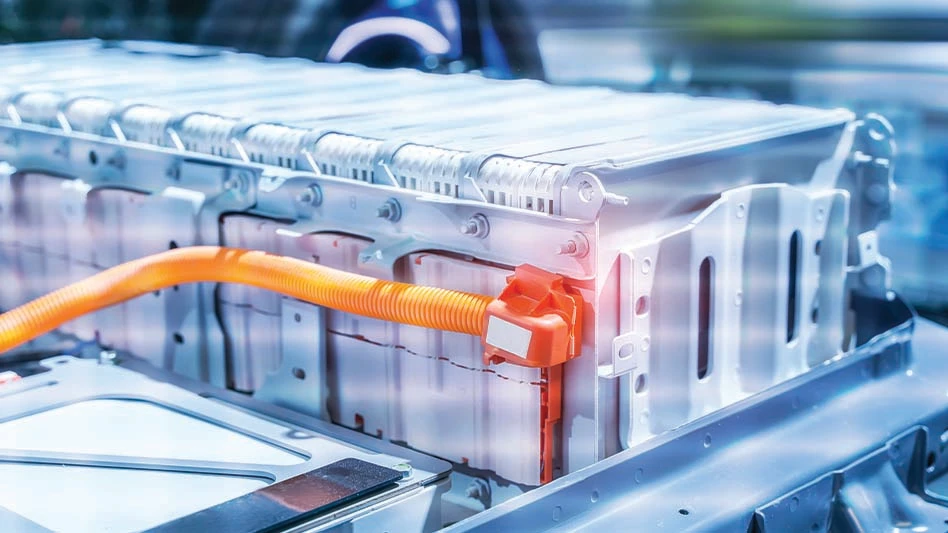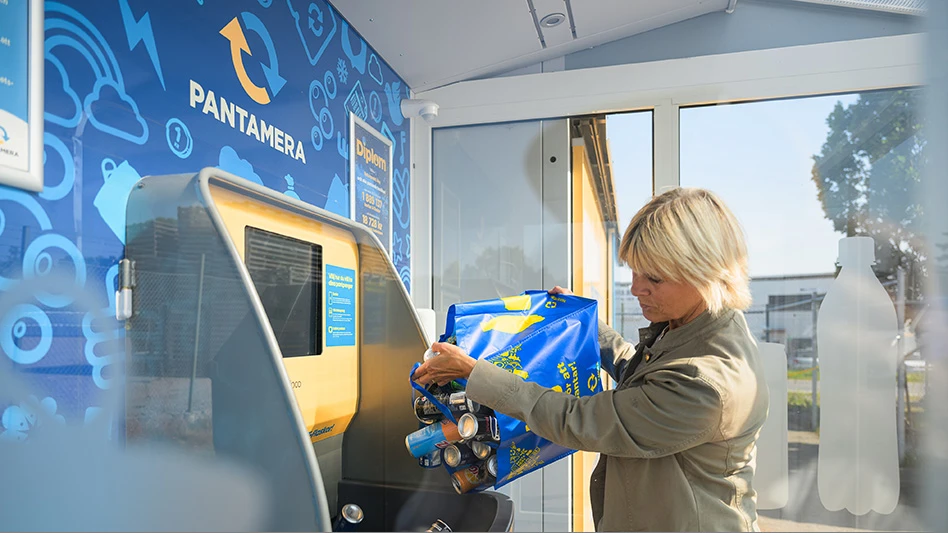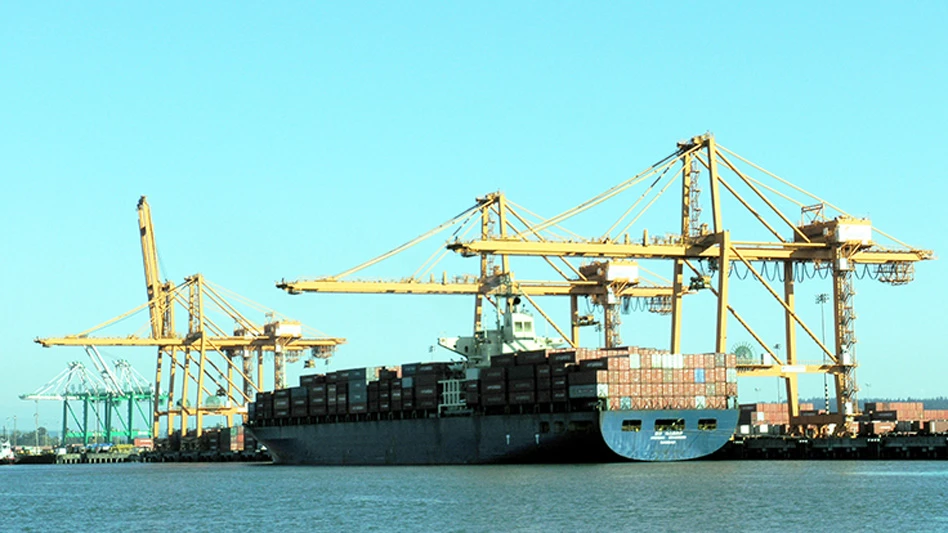The abrupt ending of Section 201 tariffs has put steelmakers in the U.S. back into a competitive but possibly healthier global market.
Not long after they took effect in March of 2002, the opposition to the Bush Administration’s Section 201 tariffs for foreign-made steel came fast and furious from overseas steel companies.
Most foreign governments (some of which have an economic stake in steelmaking firms) lined up to petition the World Trade Organization (WTO) to rule against Section 201, which the WTO did consistently.
In early December of 2003, the Bush Administration relented to the global tide of opinion, immediately suspending the tariffs, which still had more than a year to be in effect per the original timetable.
| Up, Up and Away |
|
The closing weeks of 2003 have witnessed steelmakers racing to keep up with each other in terms of announcing price increases for their finished steel products.As noted in this feature, Weirton Steel, Weirton, W. Va., is among the steelmakers levying a "raw materials surcharge" because of increasing scrap and iron ore prices, but the steelmaker is far from alone.On the electric arc furnace (EAF) side of the industry, Nucor Corp., Charlotte, N.C. is among the steelmakers who have released statements declaring price increases. In mid-December, Nucor announced that, beginning with shipments on Jan. 1, 2004, all Nucor Steel divisions are instituting a $20-per-ton raw materials surcharge on all steel mill products."We regret the need to apply this raw materials surcharge and we will remove it as soon as conditions allow," Nucor Vice Chairman, President and CEO Dan DiMicco remarked in a statement accompanying the announcement. "The unprecedented increase in the cost of raw materials used by the world’s steel producers (scrap, coke, iron ore, freight, alloys and energy) can no longer be absorbed through normal price increases," the statement also noted.Additionally, the McMaster EAF steelmaking division of Canada’s Stelco, Hamiton, Ontario, has announced surcharges ranging from $22 to $26 per ton. The company’s CEO Marcel Francoeur says, "Costs of scrap mainly, but also energy, ferro alloys, labor and supplies are all going up." |
What remains to be seen is whether Section 201, during its brief existence, helped solidify the financial footing of U.S.-based steelmakers. In the interim, many North American scrap dealers have become accustomed to addressing the export market, where Chinese steelmakers in particular are melting scrap in record amounts.
THE FERROUS SPIKE. Throughout the 20 months or so that Section 201 was in effect, ferrous scrap prices moved upward, though whether there was a correlation seems unlikely.
Speaking at the Institute of Scrap Recycling Industries Inc. (ISRI) Commodity Roundtables in September, Peter Marcus of World Steel Dynamics, Englewood Cliffs, N.J., presented a forecast through 2010 showing a growing shortfall of ferrous scrap and other steelmaking feedstocks.
In 2003, the price has risen steadily. One benchmark American Metal Market composite shows a $106 per ton mill buying price for ferrous scrap in January of this year followed mostly by steady gains until reaching a $144 per ton price in November.
Marcus believes there are overall supply constraints that, coupled with a booming Chinese steel industry, will make for a lack of steel furnace feedstock relative to global demand.
Marcus said that even though much of the new Chinese capacity consists of blast furnaces, a shortage of iron ore capacity will cause buyers at these mills to seek more scrap from an obsolete scrap reservoir that is already straining to feed the world’s electric arc furnace (EAF) mills.
That shortage became apparent in 2003, by Marcus’ calculations, with a theoretical shortfall of 36 million metric tons of obsolete scrap in the market in his "most likely" scenario, followed by shortages of 40 million metric tons in 2004, 45 million metric tons in 2005 and 50 million tons by 2010.
Marcus sees higher pricing for both steel and scrap continuing through the decade. "World Steel Dynamics places the odds at 65:35 that steel shortage conditions will recur by early 2004," he stated. "And, if there is a shortage, steel prices may rise ‘volcanically.’ Steel buyers may fear ongoing metallics shortages."
Marcus did not provide a dollars-per-ton figure on where ferrous scrap price averages might head, but did note that ferrous grades currently being exported to China for as much as $189 per ton could go even higher. "I could imagine a temporary spike to $220 per metric ton for #1 heavy melting steel" delivered there, he remarked.
Marcus admitted that World Steel Dynamics also predicted such a shortfall for the late 1990s, which did not come to be. "We missed," he acknowledged, citing several factors that forestalled the shortage, including the outpouring of scrap from the former Soviet bloc nations and the Chinese preference for blast furnaces over EAF capacity in its new steelmaking capacity.
CLOSER TO HOME. The overseas demand that has propelled prices upward is clearly welcome, but many scrap suppliers are still concerned for their traditional consuming outlets closer to home.
When reports that the Bush Administration was leaning toward repealing the Section 201 tariffs first circulated, many steel executives in the U.S. issued pleas for the president to keep the tariffs in place.
"Section 201 is a critical component of U.S. trade law. Failure to uphold the steel safeguards would have a devastating impact, not only on the steel industry, but on all industries that depend on American trade law," said Dan DiMicco, vice chairman, president and CEO of electric arc furnace steelmaker Nucor Corp., Charlotte, N.C.
Integrated steelmakers may have been even louder in their support for 201, as were their workers. The United Steelworkers of America (USWA), condemned the decision to repeal the tariffs as "clear evidence of capitulating to European blackmail and a sorry betrayal of American steel workers and steel communities. Bush willfully ignored the fact that damage to the American steel industry and American steel communities continues to this day, even with the tariffs in place," said Leo Gerard, president of USWA.
Much of that initial rancor seems to be dying down, however, as steelmaking companies instead develop strategies to move on with life after Section 201. If mid-December activity is any indication, raising prices for finished steel products seems to be one important tactic.
Weirton Steel of Weirton, W. Va., was among the first to try this, creating what it is calling a temporary raw materials surcharge on its finished steel, adding $25 per ton to prices starting in mid-December.
That same week in December, Nucor Corp. raised prices on its steel sheet products by $40 per ton, with rising demand giving the steelmaker room to pass on its rising scrap costs to customers.
If further evidence of a sea change was needed, that same week the CEO of auto parts supplier Delphi Corp., Troy, Mich., told the Detroit News that his company is "trying to figure out how to lock in long-term steel capacity" because of what it sees as a looming shortage of available steel. (The company consumes about $1 billion worth of steel annually, according to a Dow Jones report.)
A shortage of steel seems unthinkable for a commodity to which the word "overcapacity" has been attached for the past decade.
Trade delegates from throughout the world have been meeting at least annually for the past couple of years under the auspices of the Organization of Economic Cooperation and Development (OECD) to address the commonly acknowledged overcapacity problem.
Throughout 2002, delegates agreed to "develop options for the strengthening of disciplines on government interventions and other market distortions in steel, feeding the results, as appropriate, into wider-ranging discussions at the World Trade Organization." This effort was applauded by steelmaker members of the International Iron and Steel Institute (IISI), Brussels.
Speaking on behalf of the IISI Board of Directors, secretary general Ian Christmas remarked in late 2002, "There is a strong consensus in the industry, worldwide, of the need to ban further government subsidies to the steel industry except to assist with the costs associated with the permanent closure and elimination of steel capacity and certain support for the environment and research and development."
| For a Few Dollars Less |
|
While shifting industrial production and pennies-on-the-dollar overseas labor and environmental costs provide much of the brutal market competition for North American steelmakers, the long-standing strength of the U.S. dollar has been an additional burden. If the dollar continues to drift downard, this could provide a measure of relief to U.S. steelmakers. In testimony before a U.S. House of Representatives committee last fall, American University professor of economics Robert A. Blecker described the negative effects of the overvalued dollar on U.S. manufacturers and on U.S. steel producers. In a summary of the presentation available on the Web site of the Steel Manufacturers Association (www.steelnet.org), the organization notes that its own policies and findings are "consistent with the finding and recommendations in Professor Blecker’s study."Among those findings: • The overvaluation of the dollar has caused massive damage to the U.S.manufacturing sector and was a key factor in the steel import crisis. • The high dollar reduced investment in manufacturing by $37 billion in2001. • Nearly one-half of the 1.6 million jobs lost in manufacturing since 1995 arebecause of the rise in the dollar. • Steel producers are unable to shift production to foreign locations andhave only a limited ability to outsource products (semi-finished inputs)from overseas. |
But with demand for finished steel products rising dramatically in China, India and other developing nations, and North American and Western European economies potentially returning to better health, the solutions sought by the OECD may be for a problem that no longer exists.
Wall Street seems to be casting a more favorable eye on steelmakers, if the market’s reaction to an initial public offering for International Steel Group (ISG), Richfield, Ohio, is any indication.
The company, forged by financier Wilbur Ross and former Nucor executive Rodney Mott from the remnants of the former LTV Steel and Bethlehem Steel, fetched from $32 to $33 per share in its initial public stock offering, climbing above the initial $28 target price.
Such rising market confidence was probably why U.S. Steel CEO Thomas Usher could host a fundraising dinner for President Bush just days before the president would announce the demise of Section 201.
Rather than lamenting his industry’s prospects, Usher told a Reuters reporter, "The economy seems to be improving. The steel market is a little stronger. In the short term, [ending 201] may not have a big impact."
For an industry that has wallowed in red ink and a lack of confidence for much of the past few years, such breezy statements do not come easily.
HOT AND HOTTER
For steelmaking to reach a point where capacity is considered in line with demand, markets somewhere on Earth will have to absorb a great deal more steel than they used to.
In a presentation at the Institute of Scrap Recycling Institute (ISRI) Commodity Roundtables in Sept. 2003, Tony Taccone of First River Consulting, Pittsburgh, noted that developing economies such as China’s have a higher "steel intensity" measure when they lay out their initial infrastructure of highways, bridges, industrial plants, office buildings and residential apartment towers in growing cities.
Taccone noted that the U.S. economy’s steel intensity, which is measured by the amount of steel produced for each $1 billion of GDP, is trending down. For both steelmakers and scrap dealers, however, the export market could be the saving grace, as China’s "steel intensity curve" is much higher as that nation continues to develop a modern infrastructure for its 1 billion people.
Sponsored Content
Labor that Works
With 25 years of experience, Leadpoint delivers cost-effective workforce solutions tailored to your needs. We handle the recruiting, hiring, training, and onboarding to deliver stable, productive, and safety-focused teams. Our commitment to safety and quality ensures peace of mind with a reliable workforce that helps you achieve your goals.
Sponsored Content
Labor that Works
With 25 years of experience, Leadpoint delivers cost-effective workforce solutions tailored to your needs. We handle the recruiting, hiring, training, and onboarding to deliver stable, productive, and safety-focused teams. Our commitment to safety and quality ensures peace of mind with a reliable workforce that helps you achieve your goals.
Sponsored Content
Labor that Works
With 25 years of experience, Leadpoint delivers cost-effective workforce solutions tailored to your needs. We handle the recruiting, hiring, training, and onboarding to deliver stable, productive, and safety-focused teams. Our commitment to safety and quality ensures peace of mind with a reliable workforce that helps you achieve your goals.
Sponsored Content
Labor that Works
With 25 years of experience, Leadpoint delivers cost-effective workforce solutions tailored to your needs. We handle the recruiting, hiring, training, and onboarding to deliver stable, productive, and safety-focused teams. Our commitment to safety and quality ensures peace of mind with a reliable workforce that helps you achieve your goals.
Sponsored Content
Labor that Works
With 25 years of experience, Leadpoint delivers cost-effective workforce solutions tailored to your needs. We handle the recruiting, hiring, training, and onboarding to deliver stable, productive, and safety-focused teams. Our commitment to safety and quality ensures peace of mind with a reliable workforce that helps you achieve your goals.
The observation may be reflected in steelmaking and scrap melting figures for 2003, where impressive net gains can be found in China and India, while most developed nations experienced flat, reduced or modestly increased steel production.
Statistics in the accompany chart reflect steel production in the first ten months of 2003.
Crude Steel Production/Jan.-Oct.*
2003 2002 %change
China 180 million 147 million............................ +22.1%
Turkey 15.2 million 13.5 million......................... +12.6%
India 26.2 million 23.7 million......................... +10.5%
Ukraine............... 30.4 million 28.7 million.......................... + 7.9%
United Kingdom 10.7 million 9.9 million.......................... + 7.7%
Mexico................ 12.3 million 11.6 million.......................... + 5.9%
Russia 51.1 million 48.7 million........................... + 5.1%
Italy 22.4 million 21.7 million............................ + 3.3%
Japan 91.9 million 89.1 million............................. + 3.2%
South Korea.. 38.2 million 37.5 million............................. + 1.8%
Germany......... . 37.3 million 37.7 million.............................. - 0.9%
U.S. 76.1 million 77.1 million.............................. - 1.3%
France 16.5 million 16.9 million.............................. - 2.2%
Canada.... ........... 13.0 million 13.5 million............................... - 3.5%
Get curated news on YOUR industry.
Enter your email to receive our newsletters.

Explore the January 2004 Issue
Check out more from this issue and find your next story to read.
Latest from Recycling Today
- Nucor expects slimmer profits in early 2025
- CP Group announces new senior vice president
- APR publishes Design Guide in French
- AmSty recorded first sales of PolyRenew Styrene in 2024
- PRE says EU’s plastic recycling industry at a breaking point
- Call2Recycle Canada, Staples Professional expand partnership
- Circular Services breaks ground on north Texas MRF
- Tariff uncertainty results in choppy nonferrous scrap flows






